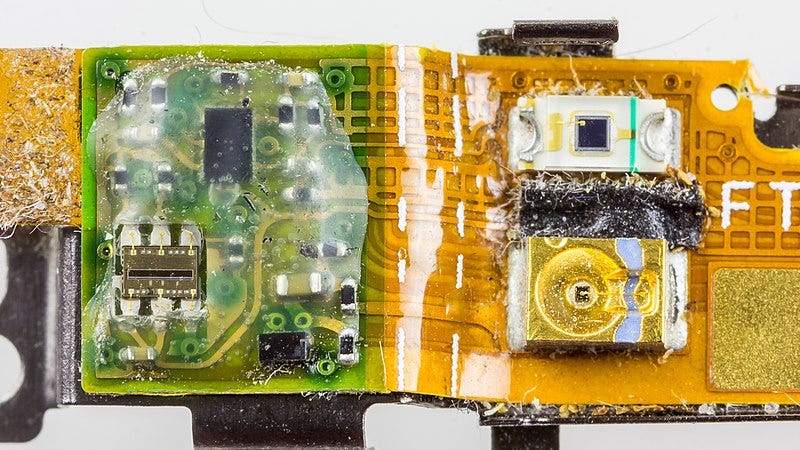We live in an era where smartphones are so embedded in our routines that their presence feels almost invisible. They wake us up, guide our commutes, manage our schedules, and keep us connected to work, family, and the world at large. Their sleek design and familiar interfaces make them seem deceptively simple — just another tool in the modern toolbox.
But underneath the surface, smartphones are remarkably complex machines packed with advanced technologies, unexpected capabilities, and engineering marvels that most users rarely notice. From the materials that go into making a screen to the sensors that track your every move, these devices reflect decades of innovation across disciplines like computing, materials science, and telecommunications.
This list isn’t about the obvious. It’s a look at what’s hidden — the lesser-known facts and surprising features that power the phone in your pocket. Whether it's helping detect earthquakes, disrupting your sleep, or quietly performing tasks that once required an entire room of computers, your smartphone is doing far more than you think. Here are 10 things you don’t know about smartphones.
10. Your Smartphone Has More Sensors Than You Realize
Smartphones are packed with far more than just cameras and screens. Behind the scenes, a range of sensors work continuously to enhance your experience. These include gyroscopes for motion detection, magnetometers for orientation, barometers for altitude, proximity sensors for screen control during calls, and ambient light sensors to manage brightness. Some phones even feature heart-rate monitors and infrared sensors. All of these contribute to the smooth, responsive behavior you expect from your device.

9. Smartphones Can Detect Earthquakes
The same accelerometers used to auto-rotate your screen can also pick up tremors in the ground. Google’s Android Earthquake Alerts System turns millions of Android phones into a decentralized seismic network. When a critical number of phones detect similar vibrations, the system triangulates the data to locate and measure potential earthquakes — often sending alerts seconds before shaking begins.
8. Smartphones Generate Most Internet Traffic
More than half of global internet traffic now comes from mobile devices, led by smartphones. This mobile-first reality has transformed how content is designed, shifting web design and digital advertising strategies to favor vertical layouts, fast-loading pages, and app-based ecosystems. In many developing regions, smartphones aren’t just the primary internet device — they’re the only one.
7. Your Phone Has More Computing Power Than NASA Had in 1969
The Apollo 11 mission operated on computers with just 1 MHz of processing power. By contrast, today’s smartphones run at multiple gigahertz and can execute billions of calculations every second. Your pocket device could have powered the entire moon mission — guidance, telemetry, and all — with capacity left over. It’s a dramatic example of how far consumer tech has come in a few decades.

6. Rare Earth Metals Power Your Device
Smartphones rely on a set of rare earth elements that enable their advanced functions. Neodymium is used in tiny but strong magnets inside speakers and haptics, while tantalum helps make compact, stable capacitors. These materials are mined in limited parts of the world, raising environmental and political concerns. Recycling old devices helps recover them — but global demand still outpaces supply.
5. Most Smartphone Screens Are Made of Sand
It may sound improbable, but your phone’s screen began as high-purity silica sand. This sand is melted and refined into glass, then chemically strengthened to withstand drops and scratches. Corning’s Gorilla Glass — used in most major smartphone brands — is both tough and thin, offering durability without compromising clarity. It’s a high-tech outcome from one of Earth’s most abundant materials.
4. Blue Light Affects Your Sleep Cycle
Smartphone screens emit blue light, which can suppress the body’s production of melatonin — the hormone that helps regulate sleep. Exposure to this light in the evening can disrupt circadian rhythms, making it harder to fall asleep. Most phones now feature night modes that reduce blue light after dark, but experts still advise limiting screen use before bedtime to support healthier sleep patterns.
3. The Vibrate Function Uses a Tiny Motor with an Off-Center Weight
That buzzing you feel when your phone vibrates is thanks to a tiny motor with an off-center weight. When it spins, the unbalanced weight causes the phone to shake. It’s a surprisingly low-tech solution that provides tactile alerts in quiet or discreet settings. Though simple, it's a clever piece of mechanical engineering embedded in every device.
2. Your Phone Is Constantly Pinging Cell Towers
Even when you’re not actively using your phone, it’s constantly in touch with nearby cell towers to maintain service and location accuracy. This keeps GPS, call routing, and emergency alerts working properly — but also enables continuous tracking by networks and apps. It’s also the reason your battery drains quickly when flying: your phone burns power searching for unreachable signals unless you activate airplane mode.
1. The First Smartphone Came Out in 1994
IBM’s Simon Personal Communicator, launched in 1994, was the world’s first true smartphone. It featured a touchscreen, email access, and even fax capability — all in a bulky, rectangular design. Though it was expensive and short-lived, Simon pioneered the concept of a mobile device that could do more than make calls. It laid the groundwork for everything from the PalmPilot to the iPhone.
“The 10” is just a fun and lighthearted diversion from the usual analysis and commentary on More Signal, Less Noise. What topics would you like me to explore in The 10? Let me know in the comments.







